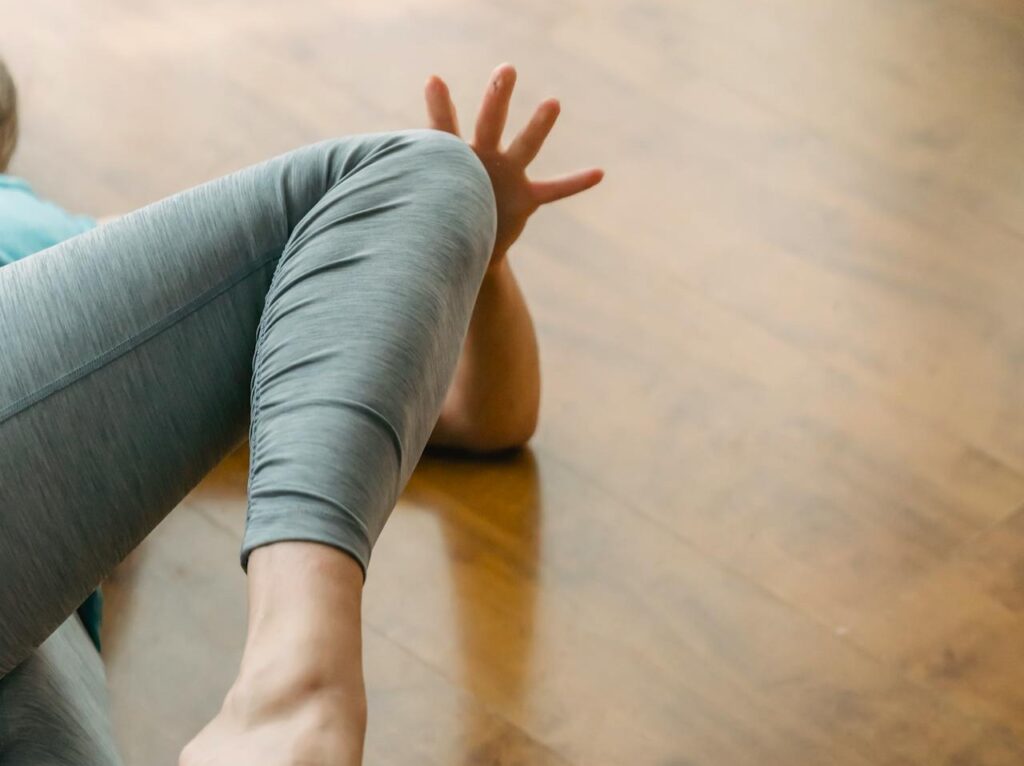Toe tap exercises are among the most versatile and effective movements you can add to your fitness routine. Whether you’re looking to improve cardiovascular health, strengthen your core, or enhance lower body power, toe taps offer a low-impact solution that delivers impressive results. This comprehensive guide explores the three main types of toe tap exercises, their benefits, and how to perform them safely and effectively.
What Are Toe Tap Exercises?
Toe tap exercises are dynamic movements that involve rhythmic tapping motions with your feet while engaging various muscle groups throughout your body. These exercises can be performed standing, lying down, or in specialized positions, making them adaptable to different fitness levels and goals.
The beauty of toe taps lies in their simplicity and effectiveness. They require minimal equipment, can be modified for any fitness level, and provide both cardiovascular and strength training benefits in a single movement pattern.
The 3 Main Types of Toe Tap Exercises
1. Standing Toe Taps
Standing toe taps are the most common and accessible form of this exercise. They primarily target your lower body muscles while providing an excellent cardiovascular workout.
Basic Standing Toe Tap
Equipment needed: Aerobic step, bench, or sturdy platform (8-12 inches high)
How to perform:
- Stand facing your platform with feet hip-width apart
- Place your right foot on the platform, keeping your weight on your left leg
- Quickly switch feet, tapping your left foot on the platform while your right foot returns to the ground
- Continue alternating feet in a rhythmic pattern
- Maintain an upright posture with engaged core throughout the movement
- Perform for 30-60 seconds
Muscles targeted: Quadriceps, hamstrings, glutes, calves, hip flexors, and core stabilizers
Circle Toe Taps
This variation adds a rotational component to challenge your balance and coordination.
How to perform:
- Stand to the right side of your platform
- Tap your left foot on the platform, then step around to the front
- Continue tapping and moving around the platform in a circular pattern
- Complete 8-10 taps in one direction, then reverse
- Focus on maintaining control and proper form throughout the rotation
Lateral Toe Taps
Perfect for targeting your outer thighs and improving lateral movement patterns.
How to perform:
- Stand to the side of your platform
- Tap the foot closest to the platform on top, then return to starting position
- Perform 10-15 taps on one side before switching to the other side
- Keep your torso upright and avoid leaning toward the platform
2. Pilates Toe Taps
Pilates toe taps focus on core strengthening and control, performed in a tabletop position that challenges your stability and coordination.
Traditional Pilates Toe Tap
How to perform:
- Lie on your back with knees bent at 90 degrees (tabletop position)
- Keep your arms at your sides, palms down for stability
- Slowly lower your right foot to tap the floor while maintaining the 90-degree angle at your knee
- Return to starting position with control
- Repeat with your left foot
- Continue alternating for 10-20 repetitions per leg
Key focus points:
- Keep your core engaged throughout the movement
- Maintain neutral spine position
- Move with control, not momentum
- Breathe steadily throughout the exercise
Single-Leg Pilates Toe Tap
This advanced variation increases the challenge by working one leg at a time.
How to perform:
- Start in tabletop position
- Extend your left leg straight out, hovering above the ground
- Perform toe taps with your right leg while maintaining the extended left leg position
- Complete 8-12 taps, then switch legs
- Focus on preventing any rotation or tilting of your pelvis
3. Vertical Toe Taps (Toe Touch Ups)
Vertical toe taps target your abdominal muscles directly and improve flexibility in your hamstrings and hip flexors.
Basic Vertical Toe Tap
How to perform:
- Lie on your back with legs extended straight up toward the ceiling
- Keep your arms at your sides or behind your head
- Engage your core and lift your shoulder blades off the ground
- Reach toward your toes with your hands, creating a “tapping” motion
- Lower back down with control
- Perform 15-25 repetitions
Alternating Vertical Toe Tap
How to perform:
- Start in the same position as basic vertical toe taps
- Lower your right leg toward the ground while keeping it straight
- Tap your right toe on the floor, then return to starting position
- Repeat with your left leg
- Continue alternating for 10-15 repetitions per leg
Benefits of Toe Tap Exercises
Cardiovascular Health
Standing toe taps provide an excellent cardiovascular workout, elevating your heart rate and improving overall endurance. The rhythmic nature of the movement makes it an effective form of low-impact cardio that’s easier on your joints than running or jumping.
Lower Body Strengthening
All variations of toe taps target multiple lower body muscle groups:
- Quadriceps: Primary movers during standing variations
- Hamstrings: Engaged for stability and control
- Glutes: Activated during platform stepping and stabilization
- Calves: Work to maintain balance and provide power
- Hip flexors: Essential for leg lifting movements
Core Stability and Strength
Pilates and vertical toe taps specifically target your core muscles, improving:
- Deep abdominal strength
- Spinal stability
- Pelvic floor engagement
- Overall functional core strength
Balance and Coordination
The dynamic nature of toe taps challenges your proprioception and improves:
- Single-leg balance
- Coordination between upper and lower body
- Spatial awareness
- Reaction time
Functional Movement Patterns
Toe taps mimic everyday movements like climbing stairs, stepping over obstacles, and quick directional changes, making them excellent for functional fitness.
Programming and Frequency Recommendations
For Beginners
- Start with 2-3 sessions per week
- Begin with 20-30 seconds of standing toe taps
- Focus on 8-10 repetitions for Pilates variations
- Gradually increase duration and repetitions as fitness improves
For Intermediate Exercisers
- Perform 3-4 sessions per week
- Aim for 45-60 seconds of standing variations
- Complete 12-15 repetitions for floor-based exercises
- Incorporate multiple variations within a single workout
For Advanced Athletes
- Include toe taps 4-5 times per week
- Extend standing variations to 60-90 seconds
- Perform 15-25 repetitions for strength-focused variations
- Add external resistance or unstable surfaces for increased challenge
Common Mistakes and How to Avoid Them
Platform Too High
Using a platform that’s too high can lead to poor form and potential injury. Start with a lower platform (6-8 inches) and gradually increase height as your strength and coordination improve.
Neglecting Core Engagement
Many people focus solely on leg movement and forget to engage their core. Always maintain a strong, stable midsection throughout all toe tap variations.
Moving Too Fast
Speed should never compromise form. Focus on controlled movements, especially when learning new variations.
Leaning Forward
During standing toe taps, avoid leaning your torso forward toward the platform. Maintain an upright posture with shoulders over hips.
Holding Your Breath
Remember to breathe consistently throughout the exercise. Exhale during the exertion phase and inhale during the return movement.
Safety Considerations and Modifications
For Seniors
- Use a lower platform or perform seated variations
- Hold onto a stable surface for additional support
- Focus on controlled movements rather than speed
- Consider performing exercises near a wall for safety
For Those with Knee Issues
- Avoid high platforms that require excessive knee flexion
- Focus on Pilates variations that don’t involve weight-bearing on the knees
- Consider seated toe taps as an alternative
For Pregnancy
- Avoid lying flat on your back after the first trimester
- Modify Pilates toe taps to a reclined position with back support
- Focus on standing variations with additional support if needed
For Rehabilitation
- Start with the gentlest variations and progress slowly
- Work with a physical therapist to determine appropriate modifications
- Focus on pain-free range of motion
Equipment Variations and Alternatives
No Equipment Options
- Use stairs in your home for standing toe taps
- Perform Pilates toe taps on a yoga mat
- Use a thick book or sturdy box as a platform
Advanced Equipment
- BOSU Ball: Adds instability challenge to standing variations
- Resistance Bands: Can be added to increase difficulty
- Weighted Vest: Increases intensity for standing toe taps
- Pilates Props: Foam rollers, balls, and other tools can enhance Pilates variations
Integration with Other Exercises
As a Warm-Up
Use gentle toe taps to prepare your body for more intense exercise:
- 2-3 minutes of basic standing toe taps
- Focus on gradually increasing range of motion
- Include all three types for comprehensive activation
In Circuit Training
Incorporate toe taps into high-intensity interval training:
- 45 seconds of standing toe taps
- 15 seconds rest
- Rotate through different variations
- Combine with other bodyweight exercises
As Active Recovery
Use slower, controlled toe taps between intense exercises:
- Pilates toe taps between strength sets
- Gentle standing toe taps during cardio recovery periods
Troubleshooting Common Issues
Difficulty Maintaining Balance
- Start with a lower platform
- Use a wall or chair for support initially
- Focus on slower movements until balance improves
- Strengthen supporting muscles with additional exercises
Fatigue Too Quickly
- Reduce exercise duration initially
- Focus on proper form over speed
- Build endurance gradually over several weeks
- Ensure adequate rest between sessions
Lack of Core Engagement
- Practice basic core exercises separately
- Focus on breathing patterns during movement
- Start with shorter holds and fewer repetitions
- Consider working with a qualified instructor
Frequently Asked Questions
How often should I do toe tap exercises?
For general fitness, 3-4 times per week is ideal. Beginners should start with 2-3 sessions and gradually increase frequency as fitness improves.
Can toe taps help with weight loss?
Yes, standing toe taps provide cardiovascular benefits that can contribute to weight loss when combined with a balanced diet and comprehensive exercise program.
Are toe taps safe for people with back problems?
Pilates toe taps can actually help strengthen the core and support the back when performed correctly. However, those with serious back issues should consult a healthcare provider before beginning any new exercise program.
What’s the difference between toe taps and step-ups?
While both exercises use a platform, toe taps involve quick, rhythmic movements with minimal weight transfer, while step-ups require full body weight transfer onto the platform.
Can I do toe taps every day?
While toe taps are generally low-impact, daily performance may lead to overuse. Allow at least one rest day per week for optimal recovery and adaptation.
Conclusion
Toe tap exercises offer an exceptional combination of cardiovascular conditioning, strength training, and functional movement in three distinct variations. Whether you choose standing toe taps for their cardio benefits, Pilates toe taps for core strengthening, or vertical toe taps for abdominal targeting, you’re investing in a versatile exercise that adapts to your fitness level and goals.
Start with the basic variations, focus on proper form, and gradually progress to more challenging modifications. Remember that consistency trumps intensity – regular practice with good technique will yield better results than sporadic high-intensity sessions with poor form.
Ready to add toe taps to your fitness routine? Begin with just 5-10 minutes of practice, focusing on one type at a time. As you build confidence and strength, you’ll discover why toe taps have become a staple in fitness programs worldwide. Your body will thank you for this simple yet effective addition to your exercise arsenal.



